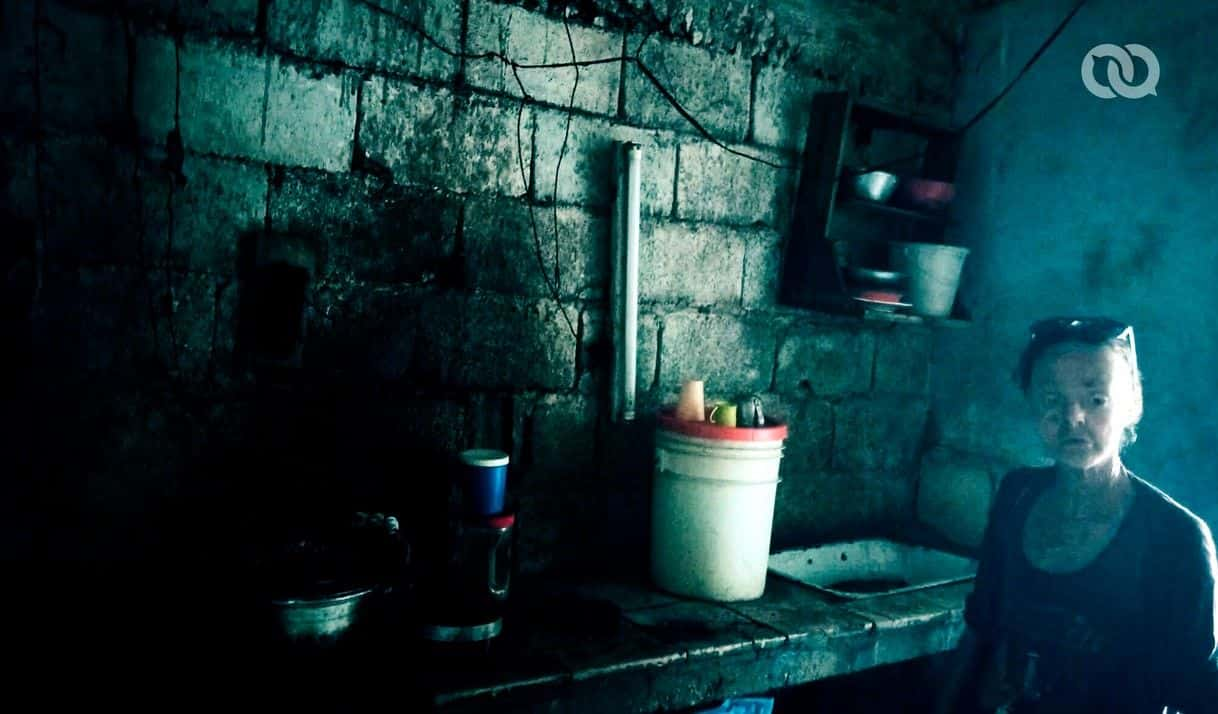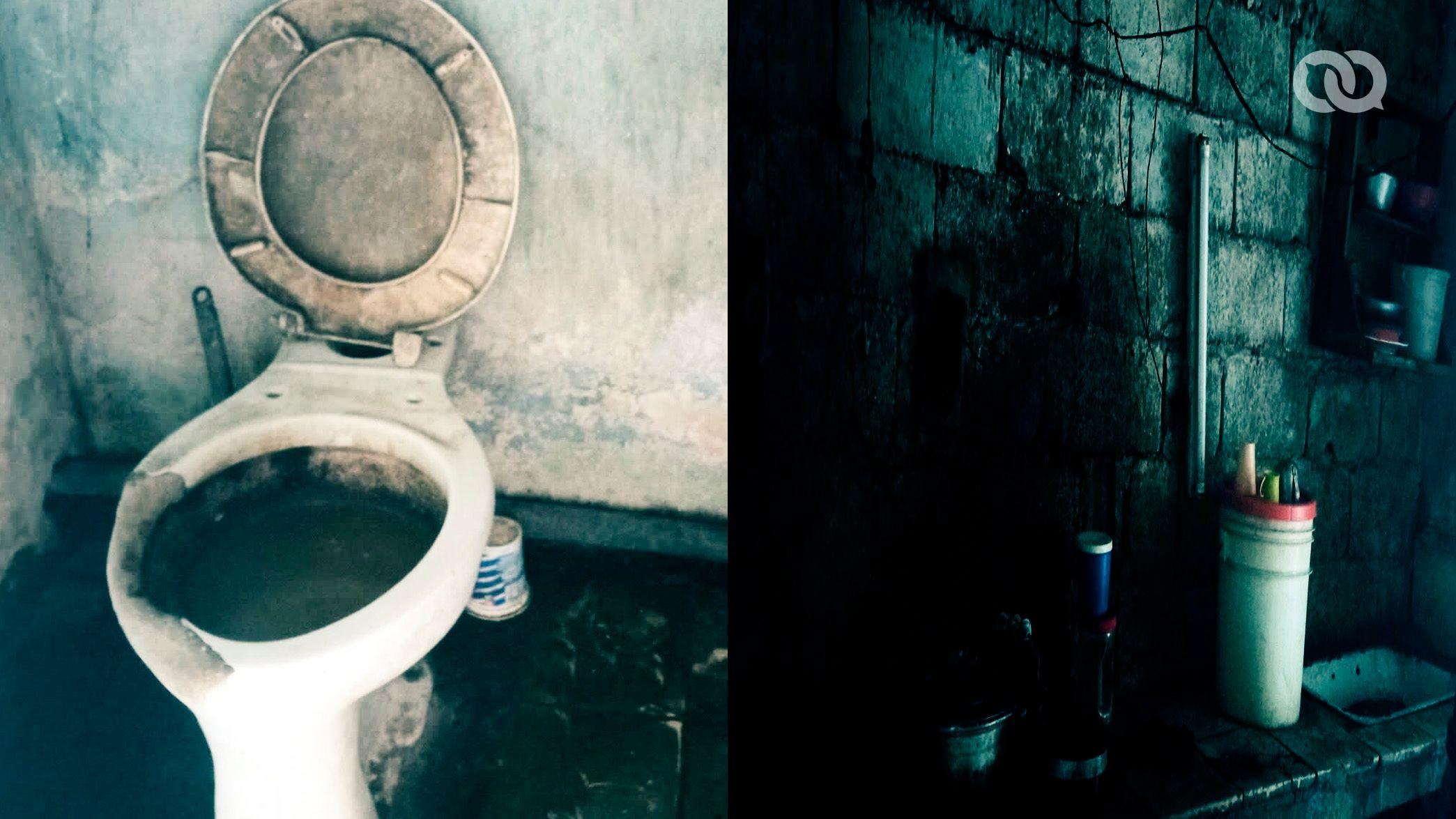Cuba: It’s Not Loneliness, It’s State Abandonment

For brief moments, Marilu Placencia Gonzalez thinks she’s alone. But she isn’t. She lives with her son Gerardo who has a mental health disorder. Marilu’s skin is dry and scaly like that of a fish. She suffers from Ichthyosis, a genetic skin condition. The two share a crumbling home on Hermanos Cardenas Street, in the community of Camajuani, in Cuba’s central Villa Clara Province.
Photos shared on social media reveal the scale of this family’s difficulties. Marilu lost vision in one eye due to her ailment, and the other is at risk. She can’t clearly distinguish objects. In addition, she can’t read or write.
Her son, Gerardo had meningoencephalitis when he was a child and today he’s left with a mind that’s fragmented, the pieces difficult to put together. He was only able to attend a Special Education school until third grade. Gerardo sometimes strikes his mother. No one intervenes. The inferno that both are living in is called “extreme vulnerability.”
Together they receive a pension equal to 2,300 Cuban pesos a month (US $6), merely enough to buy around 15 eggs; or two and a half plastic bottles of cooking oil; or nine pounds of rice. Nothing that you could live on. The government assistance they receive is an extremely insufficient amount that doesn’t come close to covering their basic needs.
“Even though this pension represents some kind of institutional recognition, it becomes something merely symbolic in the face of the real cost of living in Cuba. We can’t classify their situation as absolute abandonment, but, yes, it’s an example of functional abandonment – a serious disconnect between what is provided and what is really needed to live with dignity,” reads the post requesting humanitarian aid for the family.
In October 2024, Virginia Marlene Garcia, general director of the Cuban Ministry of Labor’s Social Security, recognized that in Cuba there are 1.7 million pensioners, and over 39% of them receive the minimal amount, set at 1,528 Cuban pesos (US $4).
In the kitchen, Marilu stands quietly in the dim light. The electric wires hang loosely and dangerously, like exposed veins. On the counter, a bucket, plastic glasses and a soot-covered pot. Beside it, a wash sink caked in dry muck. Marilu poses for the camera with her face marked by cracks, and a gaze halfway between tiredness and resignation.
The official statistics on extreme poverty in Cuba are unknown. They don’t appear in the publicly accessible databases, nor in recent international reports. Economist Pedro Monreal warned: “The statistical opaqueness regarding poverty is a pillar of the official narrative in Cuba.” For example, the country is absent from the latest Data Bank report from CEPAL’s Household Surveys. There’s no current information available about how many people are affected by extreme poverty, nor is it quantitatively known how badly the situation has deteriorated.

In addition, Cuba does its own survey to measure what is happening within the family units. It’s called the National Survey of Households’ Economic Situation. However, the results of the last survey – held out in 2022 – are still being kept under wraps. Meanwhile, inflation rises, food grows scarce, the energy crisis stretches out, and millions of Cubans have seen their subsistence grow fragile.
Monreal calls it “statistical dishonesty” and it’s the way the regime sustains its narrative – a story in which the social model is functioning and no one is being left behind. Even though the reality is something else, no one can measure it with precision.
The house where Marilu and Gerardo live is a map of abandonment. In the bathroom, a toilet with dirty stagnated water reaches to the brim. It seems more like a trap than a sanitary service. The lifted seat cover shows dark stains and scabs stuck on the plastic. The walls are covered with patches of paint, and the surface behind them has been corroded by moisture, alternating between green, blue, and ochre. The floor is cracked and there’s a small bucket in the corner to replace what the shower can no longer offer.
This home where Marilu and Gerardo live is in terrible condition. They lack the means to live their life with dignity, including access to food, medicine, and psychological attention, according to several of the requests for help posted in Facebook.
This isn’t the first denunciation of the lack of care for a patient with Ichthyosis. In March of 2024, several users helped shed light on the predicament of a 17-year-old from Biran, Holguin. The story of Roxana Garcia Guerrero went viral. “She lives in a place where they receive nothing – they took away her milk ration. It’s a girl who has to eat well, and drink a lot of liquid; she can’t be exposed to the sun or heat. They assigned her an air conditioner at one time, but it never arrived. They don’t have potable water, their water comes from a drying river where both people and animals bathe, and that same water is what they drink,” the post stated.
A year before this, the case of Yuliesby Cañizares Claro, a boy of fifteen in Guayos, Sancti Spiritus, was being shared. The family was seeking aid for his medical needs, including creams and vitamins.
The local authorities, both the health institutions and those for social protection, are in theory the cogs that should avoid having cases like these fall between the cracks. “This family needs to be seen, heard and attended to. We can’t allow human dignity to fade away in silence,” alerted the post that today is repeated on different digital platforms.
It’s not solitude. It’s State abandonment. And abandonment kills slowly, but kills.
This article was translated into English from the original in Spanish.










Comments
We moderate comments on this site. If you want to know more details, read our Privacy Policy
Your email address will not be published. Mandatory fields are marked with *